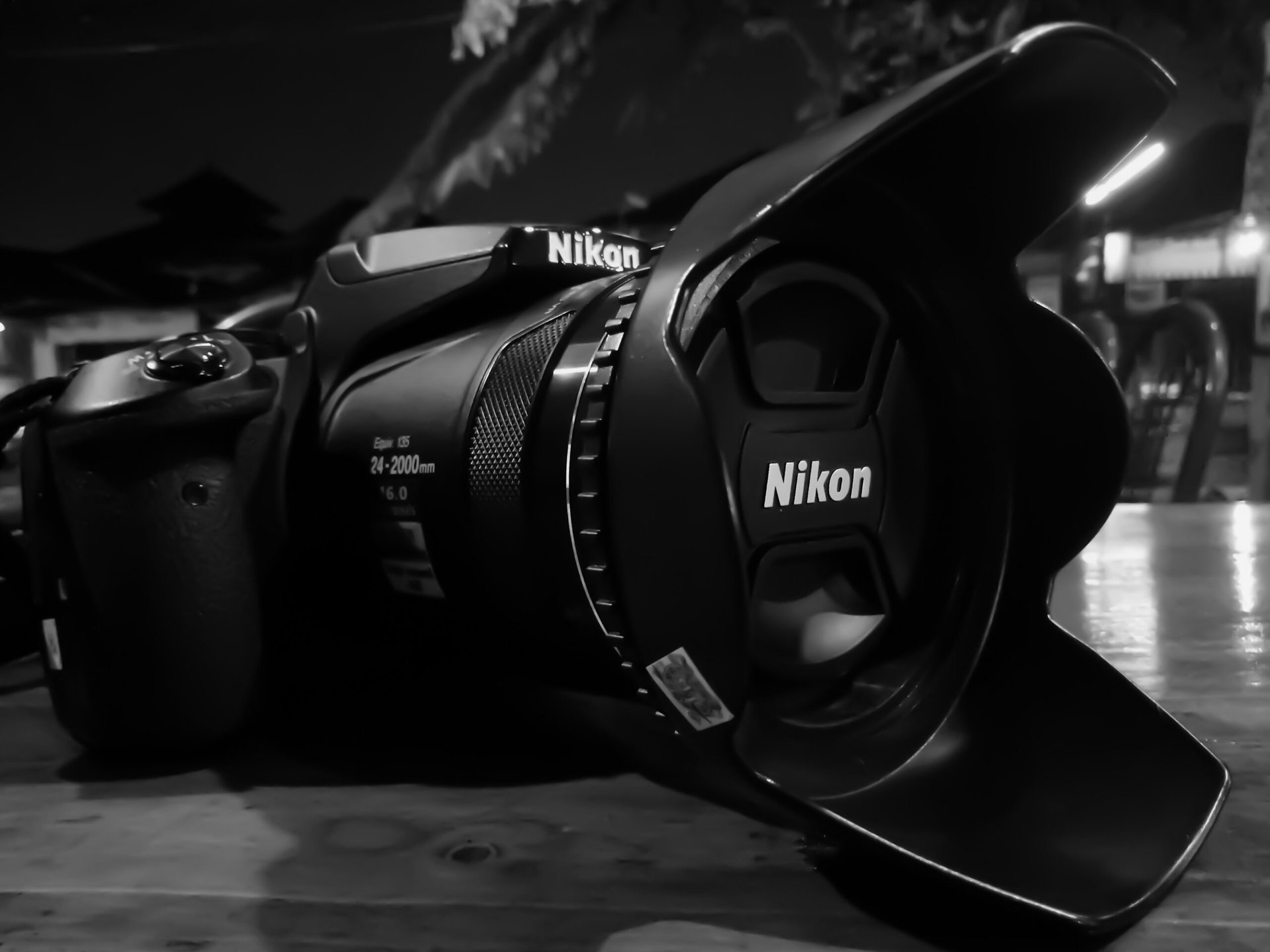
The latest techno-sensation is about a camera with, quite literally, otherworldly capabilities. The newly released Nikon P900 is a point-and-shoot that might as well be a telescope. The first consumers to get their hands on the thing are posting jaw-dropping videos of the camera zooming in on the moon — yes, the moon — with enough detail that you can identify individual craters. If you haven’t seen this demonstration yet, stop what you are doing and watch now.
To quote my friend and superphotographer Anthony Quintano: “Wow.”
At only $600, with a remarkable 83x optical zoom, the camera is an incredible breakthrough. Putting that kind of zoom power into everyone’s hands is sure to create a new avalanche of superzoom, superclose pictures on your Facebook timeline and Instagram feed. But not quite yet. The P900 is such a sensation that it has sold out everywhere, and there’s a pile of back orders.
But is there a dark side to popularizing the superzoom? And I don’t mean the “Dark Side of the Moon.”
Look at the camera’s capability in these two images — the first without zoom, and the second zoomed in on the distant point.

Source: Nikon

(If you want to see the full demonstration on Nikon’s website, click here.)
It’s amazing that you can shoot that surfer from so far away — from a distance that is just about invisible to the naked eye. Think about that: You can photograph him, but he can’t see you. Your mind might be wandering where mine has now. Is it a good thing that people with cheap-enough-to-be-in-everyone’s-hands equipment can use it for spying? Or worse? What are the privacy implications?
The gadget hits me squarely between two worlds. As a journalist and sometime photographer, I know the importance of liberal photography rules. Anything that begins to approach the notion of limiting rights to take pictures quickly approaches First Amendment territory and potential suppression of free speech.
On the other hand, I write frequently about privacy issues and about the unintended consequences of technology. It’s easy to imagine the P900 being used by peeping Toms or others who would violate privacy.
Holly Kearl, an expert in gender-based violence who runs the nonprofit Stop Street Harassment, is concerned about the distance the P900 places between photographer and subject.
“The camera will … make it much harder for a person being illegally photographed to know about it, or if they do find out about it – perhaps if the perpetrator posts it online – to know who took it,” she said.So I took those concerns to photo law expert Mickey H. Osterreicher, the lawyer for the National Press Photographers Association. The last time we spoke, he helped me explain the rights of professional and amateur photographers when filming law enforcement officials in public places. That’s a fairly simple question: It’s legal to film police in public as long as the person filming isn’t creating a nuisance or a public safety hazard. Of course, sometimes cops break the law, so there are real-life nuances to that question.
The use of superzooms creates a slightly different problem, though on the surface the law is also simple: People in public places surrender their expectation of privacy, so taking pictures of them is fair game.
The superzoom creates a different problem than the filming of cops, however:
“For this purpose, what is of more importance is where the subject of the photograph is standing rather than where the photographer is located,” Osterreicher said. Filming someone through their living room window, when they have an expectation of privacy, probably breaks the law. That’s not new. Thanks to peeping Tom laws, it’s illegal in most (but not all) situations to use a telescope or binoculars to watch someone inside their home (without a court order), and has been for some time. Most laws are even stricter about prohibiting recording of images under such circumstances.
And even if the subject of a picture is in public, the photographer’s First Amendment rights are not absolute.
“What a photographer does with those images may get them into trouble. If the images were used for advertising purposes or posted online in such a way as to embarrass or defame the person [that] might lead to a lawsuit,” Osterreicher said.
If this discussion sounds vaguely familiar, that might be because the very same debate is well underway in the realm of drone photography. Inexpensive drones have enabled unsavory characters to fly the gadgets close to hotel windows or over seemingly private backyards, and catch women in the nude. The same rules apply with drones, of course: filming people without their knowledge when they have a reasonable expectation of privacy is generally against the law.
Where the legal discussion gets murky is when cameras are used in public places to take pictures of what are obviously private things. So-called “upskirt” photos, while obviously detestable, aren’t obviously illegal. Numerous state laws banning the practice have been struck down as unconstitutional, and while legislators wrestle with ways to word new laws, technology keeps making their jobs more difficult. It’s easy to imagine superzoom cameras enabling creepy pictures of women in public places, and it’s hard to imagine how to construct a law that satisfies the demands of privacy and the demands of the First Amendment. But that’s nothing new either, warns Osterreicher in a paper he wrote recently about the drone issue:
Misgivings by the public over new technology are nothing new. Camera-equipped Small (weighing less than 55 pounds) Unmanned Aerial Systems (sUAS) may well be considered the great prodigy of the Kodak Brownie, which in 1888 spawned its own form of public hysteria. For the first time in recorded history this camera’s portability and flexible film (celluloid) with greater sensitivity to light allowed anyone to take photographs in public places rather than requiring the controlled seclusion and long exposures previously only found in a photography studio. The sudden appearance and widespread use of the Brownie caused the public to react with fear. Many places posted signs banning the use of cameras, and newspapers ran stories about the dangers of public photography.
Compared to the birth of easily portable photography, the appearance of relatively inexpensive superzoom cameras is a pretty incremental step forward in this privacy-vs.-freedom of expression tension. Still, it’s important to have the discussion.
“It is infuriating that some people choose to abuse amazing advances in technology – like the P900 Nikon – to harm others and violate their rights,” Kearl said. “Laws, policies and law enforcement do not always keep up. … A few months ago state legislators I met with did not know what upskirt photos were. I think legislators and law enforcement agencies need tech advisers to help them with the ever-evolving technology and how that technology may be used to harm others so they can always respond appropriately and proactively. Also, it would be great to see more tech companies be proactive and involved in addressing and ending harassment and abuse to the extent that they can.”
Do you have concerns or ideas about public access to this powerful photographic technology? Share with us in comments below.




Add a Comment
Our Policy: We welcome relevant and respectful comments in order to foster healthy and informative discussions. All other comments may be removed. Comments with links are automatically held for moderation.